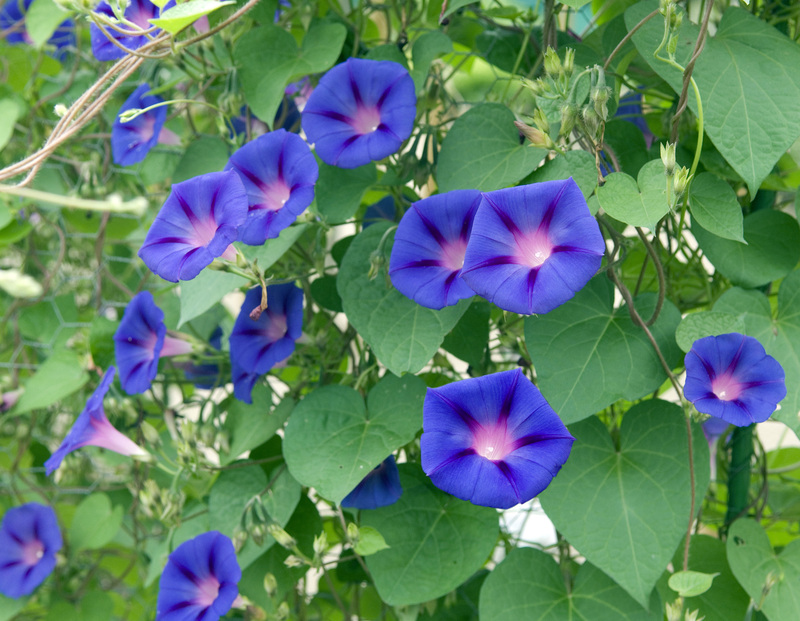UK Gardens Rejoice: 9 Ground Cover Plant Selections
Posted on 16/05/2025
UK Gardens Rejoice: 9 Ground Cover Plant Selections
The lush tapestry of the British garden can be beautifully complemented with ground cover plants that play both an aesthetic and practical role. These low-growing botanicals are perfect for suppressing weeds, reducing soil erosion, and filling in awkward spaces. In this article, we explore the best ground cover plant selections that will thrive in UK gardens. Whether you have a sunny spot or a shaded nook, there will be options for every condition.
The Advantages of Ground Cover Plants in UK Gardens
Ground cover plants are an essential component in many garden designs for various reasons:
- Low Maintenance: Once established, many ground covers demand very little care.
- Visual Appeal: They offer a carpet of color and texture that can enhance any garden's beauty.
- Environmental Benefits: These plants help in retaining soil moisture, reducing erosion, and providing habitats for beneficial wildlife.
- Weed Suppression: A thick mat of ground cover plants can efficiently suppress the growth of weeds.

Choosing the Right Ground Cover Plants for the UK
When selecting ground cover plants for UK gardens, it is crucial to consider the climate, soil type, and the amount of sunlight the area receives. Here are nine exemplary choices:
1. Creeping Thyme (Thymus serpyllum)
An excellent choice for sunny locations, creeping thyme forms a lush, fragrant mat and acts as a perfect pollinator attractor. Its tiny, aromatic leaves and delicate pink or purple flowers can add a touch of magic to pathways and rock gardens.
2. Lamb's Ear (Stachys byzantina)
Known for its soft, silvery foliage, lamb's ear is a popular choice due to its drought-tolerant nature and stunning texture. Ideal for areas with full sun, it presents a lovely contrast to other more vibrant ground covers.
3. Vinca Minor (Lesser Periwinkle)
Lesser periwinkle is perfect for shaded areas. It features glossy green leaves and beautiful violet flowers that bloom in spring. It is a vigorous grower that can cover large areas quickly, making it excellent for suppressing weeds.
4. Clover (Trifolium repens)
Clover is not only a hardy ground cover but is also excellent for lawn replacement due to its nitrogen-fixing capabilities. Its white or pink blooms attract bees and butterflies, enhancing the garden's biodiversity. It adapts well to various soil conditions and thrives in full sun to partial shade.
5. Ajuga (Bugleweed)
Ajuga, or bugleweed, is a resilient plant known for its glossy, dark foliage and vibrant blue or purple spikes in spring. It tolerates both sun and shade, and its low-growing habit makes it an exceptional choice for filling in gaps and edging.
6. Snow-in-Summer (Cerastium tomentosum)
With its grey-green foliage and masses of small white flowers, snow-in-summer creates a striking effect when in bloom. It is best suited for sunny areas and well-drained soils, making it perfect for rock gardens and along borders.
7. Irish Moss (Sagina subulata)
Irish moss is an excellent choice for gardeners seeking a lush, green carpet feel. This low-growing ground cover tolerates both sun and part shade and is ideal for in between stepping stones or garden paths.
8. Japanese Spurge (Pachysandra terminalis)
Popular in shaded areas, Japanese spurge is an evergreen that spreads into a dense mat, providing a beautiful ground cover all year round. It features glossy leaves and small white flowers, thriving in shady, moist conditions.
9. Sedum (Stonecrop)
Sedums are a diverse group of succulents that offer an array of colors and sizes. They are excellent for sunny, well-drained areas and provide year-round interest with their rich foliage and star-shaped blooms.

Caring for Your Ground Cover Plants
Most ground covers are low-maintenance and resilient, but to ensure they thrive, here are a few tips:
- Ensure proper soil preparation by amending with compost or other organic matter to improve drainage and fertility.
- Regularly monitor for pests and diseases, taking swift action to address any issues that arise.
- Water adequately during the initial establishment phase and during extended dry spells.
- Consider trimming or mowing species like clover or vinca to encourage dense growth and prevent over-spreading.
Conclusion
Incorporating ground cover plants into your UK garden plans can bring both practicality and beauty. By selecting the right varieties, you can create a landscape that not only looks amazing but also supports the local ecosystem and requires minimal upkeep. With a balance of colors, textures, and flowering times, these selections can transform your garden into a year-round tapestry of greenery and blooms. Ready to get started? Pick a few from our list, and watch your garden come to life!
Explore these options and more to find the ideal ground-hugging plants that suit your garden's unique conditions. Happy gardening!

